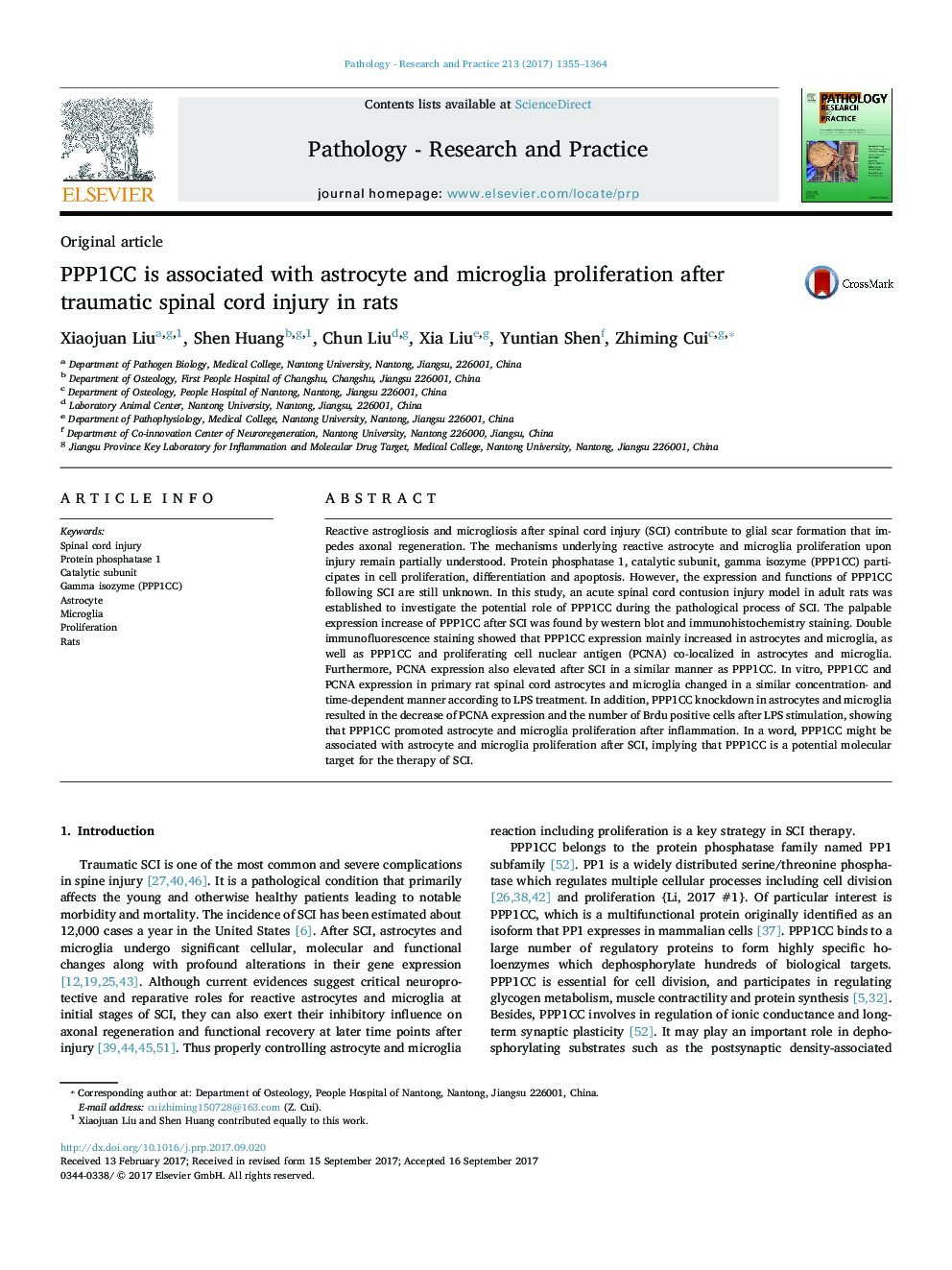| Article ID | Journal | Published Year | Pages | File Type |
|---|---|---|---|---|
| 5529129 | Pathology - Research and Practice | 2017 | 10 Pages |
Reactive astrogliosis and microgliosis after spinal cord injury (SCI) contribute to glial scar formation that impedes axonal regeneration. The mechanisms underlying reactive astrocyte and microglia proliferation upon injury remain partially understood. Protein phosphatase 1, catalytic subunit, gamma isozyme (PPP1CC) participates in cell proliferation, differentiation and apoptosis. However, the expression and functions of PPP1CC following SCI are still unknown. In this study, an acute spinal cord contusion injury model in adult rats was established to investigate the potential role of PPP1CC during the pathological process of SCI. The palpable expression increase of PPP1CC after SCI was found by western blot and immunohistochemistry staining. Double immunofluorescence staining showed that PPP1CC expression mainly increased in astrocytes and microglia, as well as PPP1CC and proliferating cell nuclear antigen (PCNA) co-localized in astrocytes and microglia. Furthermore, PCNA expression also elevated after SCI in a similar manner as PPP1CC. In vitro, PPP1CC and PCNA expression in primary rat spinal cord astrocytes and microglia changed in a similar concentration- and time-dependent manner according to LPS treatment. In addition, PPP1CC knockdown in astrocytes and microglia resulted in the decrease of PCNA expression and the number of Brdu positive cells after LPS stimulation, showing that PPP1CC promoted astrocyte and microglia proliferation after inflammation. In a word, PPP1CC might be associated with astrocyte and microglia proliferation after SCI, implying that PPP1CC is a potential molecular target for the therapy of SCI.
